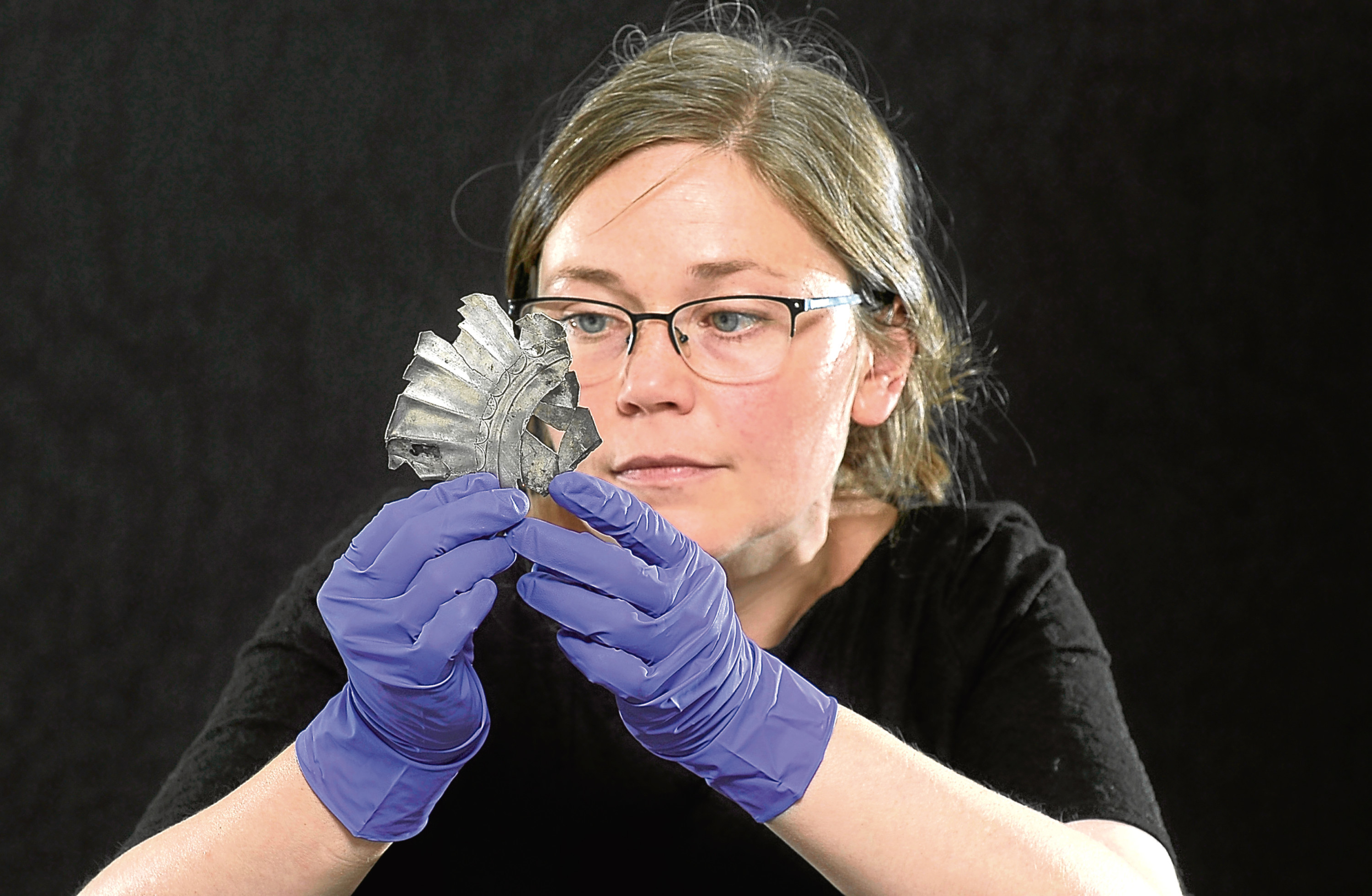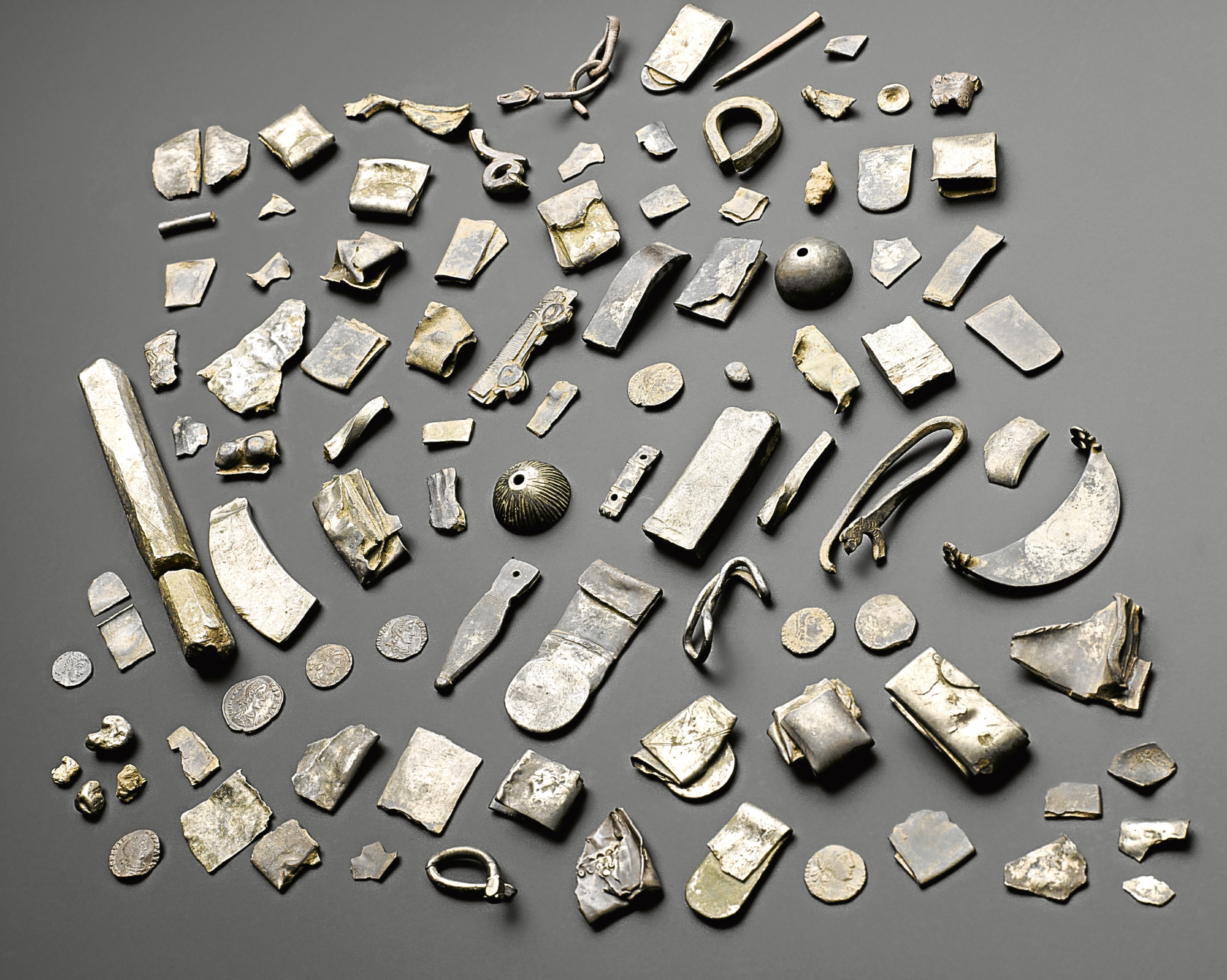
A NEW exhibition starting this week at the National Museum of Scotland in Edinburgh shows how, for a millennium, silver, not gold, was Scotland’s most prized metal.
Glenmorangie research fellow at the museum, Alice Blackwell, told Bill Gibb the Honest Truth about Scotland’s early silver.
What’s the exhibition about and how long has it taken to put together?
It tells of the first thousand years of silver in Scotland, when it was the most important precious metal in the country. There has been a full year of designing, organising and writing the accompanying book. It combines new research we’ve done on 19th Century finds as well as from the past few years.
When did silver first come to Scotland?
Although we have our own deposits of silver ore, they weren’t exploited until much later, so the first silver arrives with the Roman army around AD75.
And what was it used for?
In effect it was part of Roman foreign policy – they were trying to buy off people beyond their borders. Interestingly, although they also had gold, which they knew was more valuable and used elsewhere, they didn’t use that here. There are only a handful of gold Roman objects in Scotland. We think it’s because the frontier in Britain was a bit less troublesome so they didn’t think they needed such prestigious metal.
So, it was bribes really?
Absolutely – or gifts if you prefer – to try to get the inhabitants of Iron Age Scotland onside. They were given piles of coins they couldn’t spend, because they didn’t use money, but they were shiny and new and a good way of showing off.
What was the next stage?
From about the 3rd Century onwards those who got silver started melting it down and making their own objects. It was from what’s called hacksilver, dishes and plates that the Roman Empire chopped up for its bullion value. They made massive silver neck chains which weighed up to 3kg or about 10 pounds – that’s twice as heavy as the Crown of Scotland. They were worn choker-style round the neck so it was doable, but obviously not very comfortable. Only nine of those silver chains survive and we’ll have them all displayed together for the first time.
How widespread was silver in Scotland?
It was only in certain parts until the 6th to the 8th Centuries. It shifts then from being prestigious items to show your importance to pretty much just being broaches more commonly available.
We’ve got some gorgeous examples. The thing was that Roman silver was recycled time after time over 500 years. Each time there was the temptation to stretch it a little further by putting in copper alloy. So we’ve got things from the 8th Century that look green because they’re 50% copper.
What about the Vikings?
That’s the last bit of our story. They arrive from the late 8th to 10th Century with the first new silver since the Roman period. That’s a lot of armlets and ingots. There was also Islamic coinage and we have a few of those. Some of the silver was cut up for trading and to buy slaves.
Where did your finds come from?
Some were found in the 19th Century when stone circles were being dynamited to clear fields for cultivation. But many other iconic silver objects in the 18th Century were melted down for the bullion. So this recycling has continued right from Roman times.
And more recent?
One of the most remarkable silver finds is the Dairsie hoard. It was a stash of Roman hacksilver discovered in Fife in 2014 by Livingston teenager David Hall, who was using his metal detector. It was his first proper find. There were four plates and bowls chopped up and passed to an Iron Age tribe.
Scotland’s Early Silver runs from October 13 to February 25 at the National Museum of Scotland in Edinburgh. Visit nms.ac.uk

Enjoy the convenience of having The Sunday Post delivered as a digital ePaper straight to your smartphone, tablet or computer.
Subscribe for only £5.49 a month and enjoy all the benefits of the printed paper as a digital replica.
Subscribe